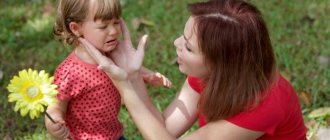From the history
The first references to isotherapy date back to the end of the 19th century, when such a term did not even exist. The notes of a doctor in a French mental health clinic describe how his patients loved to draw during the exacerbation of their illnesses and gave up this activity as soon as they recovered. These ideas were picked up by the psychiatrist M.
The term itself was first used by Adrian Keith Graham Hill, an English artist, teacher, art therapist, and quite a popular TV presenter. After graduating from the School of Art and going through the First World War, in 1938 he ended up in a tuberculosis dispensary. It was there, observing the sick, that he concluded that the disease was looking for a way out through drawings.
The technique has become incredibly popular and has developed into a separate, independent direction. The idea was picked up by such famous psychologists as K. Rogers, R. May, A. Maslow. They all agreed that every person involuntarily holds back abilities that need to be released for successful self-realization, and they considered isotherapy to be one of the most effective ways for this.
Goals and objectives
The main goal of isotherapy is to extract from a person’s subconscious what he does not admit even to himself, let alone share it with someone. Sometimes he is unaware of the problems that are stored in the subcortex and prevent him from freely enjoying life.
Example. Parents brought to an appointment a girl suffering from low self-esteem, many complexes, and socially maladapted. At the same time, cognitive abilities (thinking, memory, imagination) were at a level appropriate for her age. When isotherapy was used in classes with her, the psychologist noticed the same detail in all the drawings - a cat.
Moreover, she was always portrayed as black, scary, big and angry. When talking with the parents, it turned out that there were never any animals in the house. In the process of further work with the child, it was revealed that the problem was an undeveloped relationship with the first teacher, who had an authoritarian teaching style and thereby suppressed the girl. Her last name was Koshkina.
Here are just some of the tasks of isotherapy:
- help to throw out everything hidden and unconscious;
- express emotions and feelings in a way that is safe for yourself and others - remove the censorship of “super control”;
- free from aggression, nervousness, psychological constriction, jealousy, phobias, imbalance - stabilize the mental and emotional state;
- develop communication skills for social adaptation, fill the communication gap;
- raise self-esteem, get rid of complexes;
- promote self-realization;
- help solve family problems;
- Unleash your creative potential and open up new possibilities.
Depending on the person with whom isotherapy is used, its tasks may be slightly adjusted. For example, it helps preschoolers to adapt to the world around them, children with disabilities to express their emotions, autists to admit their fears, and adults to stabilize their condition.
Basic principles
Isotherapy classes are organized taking into account the basic principles on which this area is based.
- You cannot set the task to draw beautifully or correctly. The more arbitrary the image, the more accurately it will convey what is happening inside a person.
- Do not provide opportunities for self-evaluation and criticism (“I can’t draw,” “I’m not much of an artist”).
- Provide a wide range of visual instruments. Their choice can tell a lot: a pencil will be taken by a pedant or a perfectionist, paints by a freedom-loving nature, felt-tip pens by a person prone to insincerity and lies.
- No rulers, compasses or other drawing supplies. Everything is done entirely by hand.
- Create an appropriate environment so that there are no distractions.
- A psychologist (psychotherapist) should not interfere in the drawing process: you cannot comment, clarify, or explain anything.
- It is imperative that the painter, upon completion of the work, comment on what he captured. Sometimes even a specialist can misinterpret what is depicted.
- In group classes, other participants should not be allowed to comment on others' drawings without their consent.
- To track changes occurring in a person, a specialist collects drawings into a separate portfolio, based on which he regularly draws conclusions and adjusts the course of correction or treatment.
We invite you to familiarize yourself with Lip care after hyaluronic acid - recommendations and complications, what not to do after injections
If one or more principles are violated, isotherapy classes may turn out to be completely useless and ineffective.
Art therapy for children
The most difficult clients of psychotherapists are children. The difficulty lies in the fact that it is difficult for children to express in words and logical reasoning what worries them, worries them, and causes indignation. The child's psyche is very vulnerable. Only art therapy for children helps in identifying existing problems and correcting mental and behavioral attitudes.
A child can very easily be offended, frightened, stressed or irritated. When parents notice that their child is behaving incorrectly and incorrectly, and all their measures do not produce useful results, then art therapy becomes effective. Morals, instructions, notations and other methods of parental influence are still incomprehensible and ineffective on the child. If you need to eliminate a psychological problem or understand what is happening to a child, then seeking the help of a psychotherapist on the website psymedcare.ru will help in solving the problems.
The most important conditions of art therapy for children are:
- Safety.
- Attractiveness.
- Clarity.
- Availability of funds.
In order for a child to open up, you need to create an atmosphere where he will feel light and free. Often parents cannot create such an atmosphere because they do not show patience, evaluate the child, say what cannot be done and what can be done. When conducting art therapy, the psychotherapist does not limit the child, which allows the child to open up and bring out what he cannot express in words.
The most used techniques are:
- Isotherapy.
- Sand therapy.
- Monotype.
Sand therapy is good because it is pleasant for the child, allows you to develop fine motor skills, as well as self-expression. All you need for this is a box of sand.
The most accessible is drawing, which is done with pencils on a piece of paper. At first, the child may draw doodles. But as internal constraints are eliminated, he will begin to complement his drawing, creating a certain plot.
Monotype is the formation of a spot on a piece of paper. The child must describe this spot and even complete the drawing if he wishes.
All methods of art therapy allow a child to open up, talk about his problem through creativity, and even change his attitude towards it, his behavior pattern, or learn something.
Types and forms
Isotherapy is presented in two forms - active, when a person draws himself, and passive, when he works with ready-made works of art. In the first case, he releases his unconscious, which breaks out from under the yoke of “overcontrol”. In the second, he expresses judgments that help the psychologist (psychotherapist) understand his inner beliefs and worldview, and sometimes his temperament.
For example, Malevich’s “Black Square” for rationalists is just a dark rectangle, for people with stuck accentuation of character - a failed picture, for a hyperthymic temperament - a multi-colored cube, for the affectively exalted - a rebellion in art, etc.
Types of activities
Isotherapy is carried out in the form of individual, pair and group sessions.
On practice
Despite the fact that isotherapy is actively used in working with adults, it has proven itself to be most effective in child psychology. This is explained by the fact that the child has a more vivid imagination, he is more inventive, loves games and experiments, pays attention to little things and details. It has been proven that children express the maximum of their emotions in drawings, which they are not always able to express verbally. And they do it completely sincerely, completely turning off that very “super control” that still functions too weakly for them.
For preschoolers
This direction is often used for preschoolers in kindergartens. Here the main task of isotherapy is to help them adapt to the outside world and society. What you need to know when organizing classes in this group:
- isotherapy is an excellent way to switch attention from one activity to another;
- it helps preschoolers establish contacts with each other and resolve conflicts;
- to develop creative abilities, it is useful to arrange paired activities so that children complement each other in creating a common image;
- It is also advisable for an adult to draw together with children (to establish contact and build trust), and then comment on what is depicted, teaching children self-analysis and reflection;
- Bright colors and a wide selection of drawing tools lift the child’s mood and allow him to open up and realize himself to the fullest.
The most important thing that adults organizing isotherapy classes for preschool children should take into account is the desire and creative impulse of the child himself. Without these components, the business can be considered a failure. Under no circumstances should you be forced to draw.
Recommendation. There is a research work “Isotherapy in the correction and development of the psycho-emotional sphere of preschool children” (author - N. Kozlova), which describes in detail aspects of this area.
For children with disabilities
Isotherapy as a method of psychological correction is often used in working with children with developmental problems:
- disabled people;
- with developmental delay (physical, mental, mental);
- with mental disorders;
- with physical disabilities;
- outcasts.
Often, for children with disabilities, isotherapy becomes the only way to express themselves and their own problems. It unloads them emotionally, allowing them to free themselves from negative emotions and aggression. Helps the psychologist (psychotherapist) understand the child and bring him into contact. As practice shows, using this approach in working with such children always leads to exclusively positive results.
For schoolchildren
Despite the fact that isotherapy is mainly used in working with children in kindergarten, it can also be actively used in classes at school. It has little in common with art lessons, where a specific task is given, the completion of which is graded. This forces “overcontrol” to kick in. The exception is classes when you are allowed to draw on a free topic.
We suggest you read Why hCG stays at the same level
School psychologists should ideally monitor children's performance in art classes. By analyzing the dominant colors that a child uses, the choice of drawing tools, the observance of proportions, leading images and motifs, it is possible to promptly identify the mental problems he has.
Isotherapy for teenagers has its own specific features, since it is difficult to purposefully encourage them, even in classes with a psychologist, to draw something (they are shy, afraid to show their subconscious, do something wrong, and other reasons). Therefore, here the specialist is required to use a completely different work scheme:
- with the help of parents, find out the teenager’s interests in painting (this can be modern trends: graffiti, street art, 3D drawings, photorealism, fantasy, body art, mail art, net art);
- study his work in this direction;
- identify patterns in drawing techniques and created images;
- conduct conversations with him about the current that interests him;
- after contact has been established, ask to draw something in this direction.
After this, you can gradually collect a portfolio and conduct targeted work to identify and correct existing psychological problems.
For adults
In the capable hands of a professional psychologist (psychotherapist), isotherapy can be used as an effective means of correcting and stabilizing the mental state for adults. Despite the fact that they, as a rule, are more stingy with emotions, such activities allow them to remove the censorship of “overcontrol” and express in drawings what really drives them: fears, childhood and adolescent psychotraumas, internal complexes, obsessive thoughts and ideas .
If in kindergartens and schools group and paired classes are usually organized, then individual classes with adults are most effective when they are not constrained by anything.
For children, isotherapy offers a wide range of techniques and methods (using plasticine, glass and other applied materials). When working with adults, a sheet of paper and a pencil or paints are often sufficient.
Art therapy techniques
The variety of types of art therapy creates a large space for identifying, adjusting and consolidating the problem situation. The main methods of art therapy are active and passive:
- The passive art therapy technique consists of using ready-made types of art: viewing a drawing, discussing a plot, listening to music or a fairy tale.
- The active technique is aimed at creating a new creative object. A person creates his own creation, while beauty and aesthetics are not appreciated.
Art therapy can be used individually or in group sessions. For example, a theater scene always includes at least two characters. Here people can play out their own roles or become those with whom they have interpersonal problems. When losing, you can stop at any time, think, get advice and try a new model of behavior that can solve the problem.
Art therapy techniques can be used both separately and as an auxiliary direction in psychotherapy. This direction is not a panacea for all ills and for solving any problems, but it has a positive impact.
The main goal of art therapy is sublimation - the transition from negative experiences to problem solving. When creating a creation, a person only talks about his problem. But it’s not enough to tell, you still need to do something with it. Here it is proposed to make your problem attractive, to find ways to solve it. As a person changes his creativity into a more attractive form, he himself will change.
Art therapy is almost always used when working with children, however, its methods are also used when correcting adult problems, since they allow you to activate your performance and internal potential.
Isotherapy exercises
A variety of exercises are used in isotherapy. They can be performed both under the guidance of an experienced psychologist, and simply by parents, educators, and teachers. Adults can use them independently to assess and correct their own psycho-emotional state.
Soiling
Kids are encouraged to draw with their palms, legs, fists, and fingers. This exercise removes inhibitions and allows the child to feel free. He becomes liberated and can, unnoticed by himself, dare to take actions that he does not perform in ordinary life.
Monotype
Paint any image on glass using watercolors. Without allowing them to dry, place a sheet of paper on the glass and press. Complete the resulting print. Give it a name. Make up a story about him.
Plasticine applique
The plasticine is kneaded in your hands until warm and soft. Roll out onto a sheet of thick cardboard in the form of a pattern. Decorated with beads, grains, grains, pasta by pressing them into plasticine.
Drawing stories
The adult sets a topic (as general as possible so that it does not greatly limit the child’s freedom of creativity) for the drawing. After finishing the work, you need to describe what is depicted.
Scribble
An exercise similar to the previous one, but more focused. Can be used in isotherapy for adults. It is suggested to move the pencil across the paper without any intention. Then look closely at the resulting drawing and try to see the outlines of some image in it, and then complete it with paints.
Blotography
Used in art therapy for hyperactive and irritable children. A large drop of paint is applied to the paper. It needs to be inflated in different directions to achieve some clearer outline.
Adults can be recommended to use a technique such as a mandala - this is a drawing in a circle. Its psychological effect was revealed by K. Jung, noting that coloring these specific patterns calms, relieves stress and restores harmony in the soul.
We invite you to familiarize yourself with Cooking meals in kindergarten
Isotherapy is rightfully considered one of the most effective and popular areas in art therapy. It has been proven that people in classes with a psychologist are much more willing to draw something than to sing, dance or write poetry. This allows you to establish close contact with a specialist and open up those internal abscesses that interfere with your life.
"Scribble"
One of the favorite techniques that brings children to positive emotions, relaxes them, and awakens interest in communication.
The purpose of the technique:
- Increased self-esteem.
- Exploring your feelings.
- Relieving tension.
- Development of communication skills.
The essence of the technique is that a person is asked to quickly draw chaotic continuous lines on paper, another group member tries to continue (complete) the drawing, then the first participant joins again. This happens until one of the participants decides that the drawing is finished. At the next stage, the “work” is discussed. Everyone expresses their opinion about the drawing, shares their emotions and feelings. At the final stage, participants compose a plot story for the drawing.
The technique helps to get rid of the influence of standard patterns and release destructive feelings in a socially acceptable form. Materials:
- Drawing paper.
- Acrylic paints.
The creative process here is arbitrary, there are no rules or restrictions. Everything is appropriate - any colors, shapes, lines. The process of creating a drawing is individual and unpredictable. The technique always finds an emotional response in the souls of both children and adults. This is a powerful prevention of psychological problems associated with anxiety, fear of social suppression.
Important! Isotherapy has no negative sides and never produces side effects; it cannot cause harm to the patient.
Patients perform work on a given topic at the request of the therapist. Classes are impromptu. The only condition is to maintain the theme of the drawing. When doing work, people do not think, but express emotions and sensations. Such drawings are a huge storehouse of information for diagnostics.
An example of such a technique is the “Non-existent animal” exercise. Based on the details of the drawing, the specialist draws a conclusion about the person’s condition, his qualities, and psychological problems.
Attention! The basis of isotherapy is relaxation, entering a light trance. Here we will not use a speculative approach and logical thinking at all.
Its goal is to improve the emotional background with the help of color and concentration on one’s feelings.
Materials:
- Paper.
- Watercolor paints.
- Brushes.
To work, you need to sit down, relax, close your eyes and imagine the most joyful moments of your life, feel all the sensations. After this, you should imagine your feelings in the form of colors and shapes. There is no need to stress, only emotions and sensations are important here. It is enough to stay in this state for 10–15 minutes. After this, the images you see can be transferred to paper.
The goal is restoration of strength, relaxation, calmness.
What is needed for this:
- Calm melody.
- Sheets of paper.
- Watercolor.
- Brush.
At the beginning of the lesson (the first 10 minutes), you need to close your eyes and immerse yourself in the music. Then you can take a brush and paint. As you work, your hand should spontaneously follow the music. When performing the exercise, you need to focus on your feelings and the pictures that appear before your eyes. The result is a bright positive mood, a surge of strength, and a release of tension. In some cases, patients feel the tension and tightness of individual muscles go away.
Exercise "Flower"
- Develop your imagination.
- Relieve emotional stress.
- Development of fine motor skills of hands (for children).
Materials:
- Paper.
- Paints.
- Pencils.
- Markers.
- Brushes.
Before starting work, you should close your eyes, relax and imagine a beautiful flower. What does he look like? How many petals does it have? What color and shape is it? What does it smell like? What surrounds him? After your imagination has drawn a picture, you can open your eyes and depict everything that comes to mind. For some, the flower will be joyful, for others it will be sad.
Why should you try isotherapy? Firstly, because you have nothing to lose. Secondly, you will never get a negative effect. Isotherapy has no contraindications, is suitable for everyone without exception, and does not require large expenses. At the same time, the benefits of it are obvious.
Children's art
Art is a very exciting activity that arouses interest not only among children, but also their parents. That is why mothers and fathers happily practice together with their baby, thereby turning art therapy classes into family leisure. Let us note that drawing, modeling or creating dolls allows you to both show imagination and develop hand motor skills, as well as cultivate a child’s aesthetic taste.
We offer you several options for art therapy classes for your reference.
fairy tree
Even children as young as three years old can already create paintings that will complement the interior no worse than the masterpieces of famous artists. All you have to do is help the child a little. For example, you can start learning by drawing a fairy tree.
To do this you need to take:
- a sheet of paper (regular writing paper);
- watercolor or gouache, which is more common;
- several brushes of different sizes;
- rags, rags;
- a jar for water.
If you use gouache, then use a drop of water added to each color to soak the paint a little.
A sheet of paper is placed on the table, paints and water are placed nearby, and a cloth is always at hand. Now we can begin.
The tree is drawn starting from the trunk. Since the tree is fabulous, the trunk can be blue-brown or orange-violet. The combination can be any. From the vertical line of the trunk in the center of the leaf you need to make several branches.
Then take a contrasting paint or one that matches the tone. It is applied next to the drawn outline. There can be many such lines.
Leaves are applied over the trunk and branches with another paint. The thicker the leaves, the more voluminous the crown. You can help yourself with your fingers. The leaves should be colorful, because the tree is magical. The roots of the tree are covered with fabulous flowers.
After drying, the masterpiece is ready. It can be decorated with an original frame and hung in the nursery, living room or any other room. And if you want to demonstrate such a masterpiece to everyone, then you can take a photo of it and post it on social networks.










